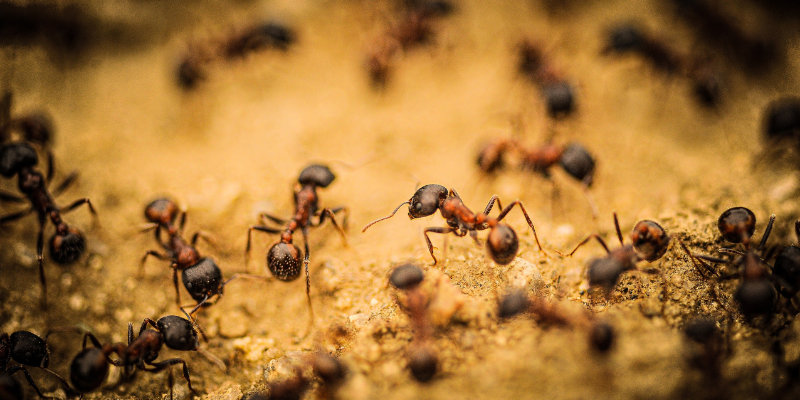
While ants are crucial for soil aeration and decomposition, they can also be a nuisance. Invasive species like the Argentine ant often invade homes, causing frustration for residents.
Moreover, ants like the Carpenter ant can damage wooden structures by building their nests inside. This makes understanding and managing these local critters essential for maintaining your home and the environment.
What unique behaviors can we observe in the ant populations of Louisiana? Keep reading to uncover the intricate world of Louisiana’s ants and discover what makes each one special.
Key Takeaways
- Louisiana is home to various ant species, including Red Imported Fire Ants, Carpenter Ants, and Crazy Ants, each with unique environmental behaviors and impacts.
- Effective ant control includes quick identification, using natural and chemical pesticides, and implementing preventative measures like sanitation and exterior maintenance.
- Professional pest control services offer tailored solutions, including inspections and customized treatment plans, essential for managing severe or extensive ant infestations.
COMMON SPECIES OF ANTS IN LOUISIANA
In Louisiana, you may encounter various types of ants, some of which pose significant headaches and affect local ecosystems.
Red Imported Fire Ants
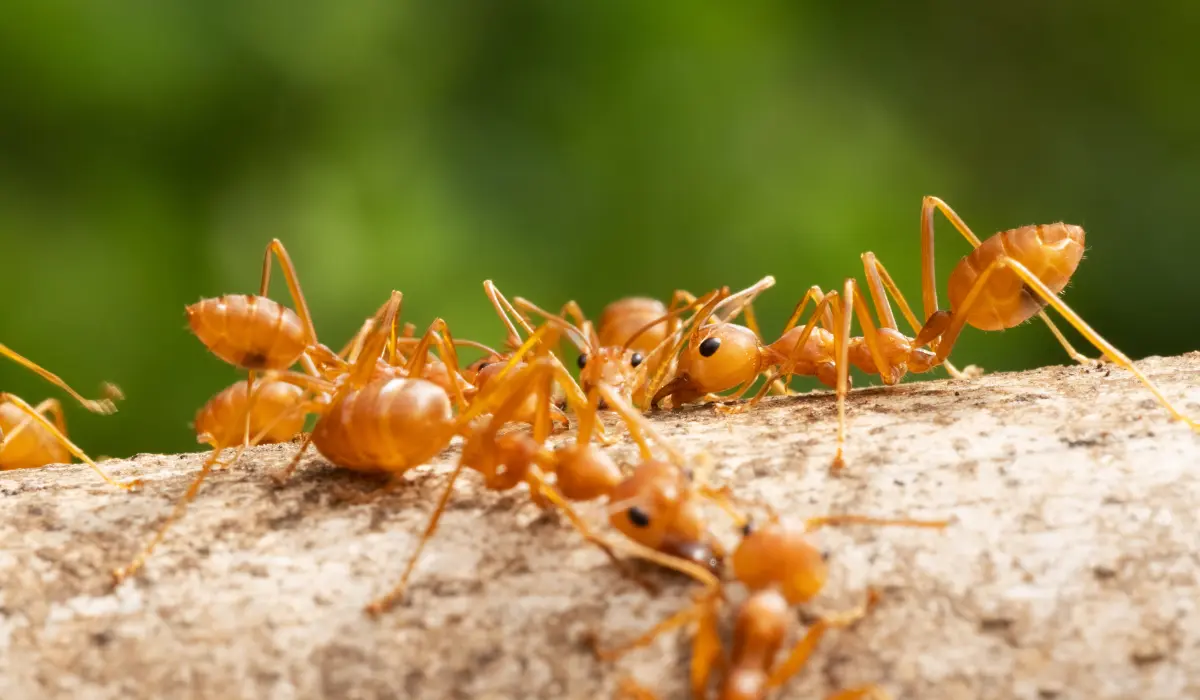
With their origin in South America, the Red Imported Fire Ants are notorious for their painful stings and large colonies. They disrupt local ecosystems and damage crops and wildlife.
| Aspects | Description |
| Habitat | Prefer moist areas like lawns and near bodies of water |
| Diet | Omnivorous, preferring proteins and fats |
| Behavior | Aggressive, particularly when disturbed |
| Appearance | Reddish-brown, size varies from 1/8-inch to 3/8-inch |
| Unique Features | Display strong group tactics and can form floating ‘rafts’ during floods |
Carpenter Ants
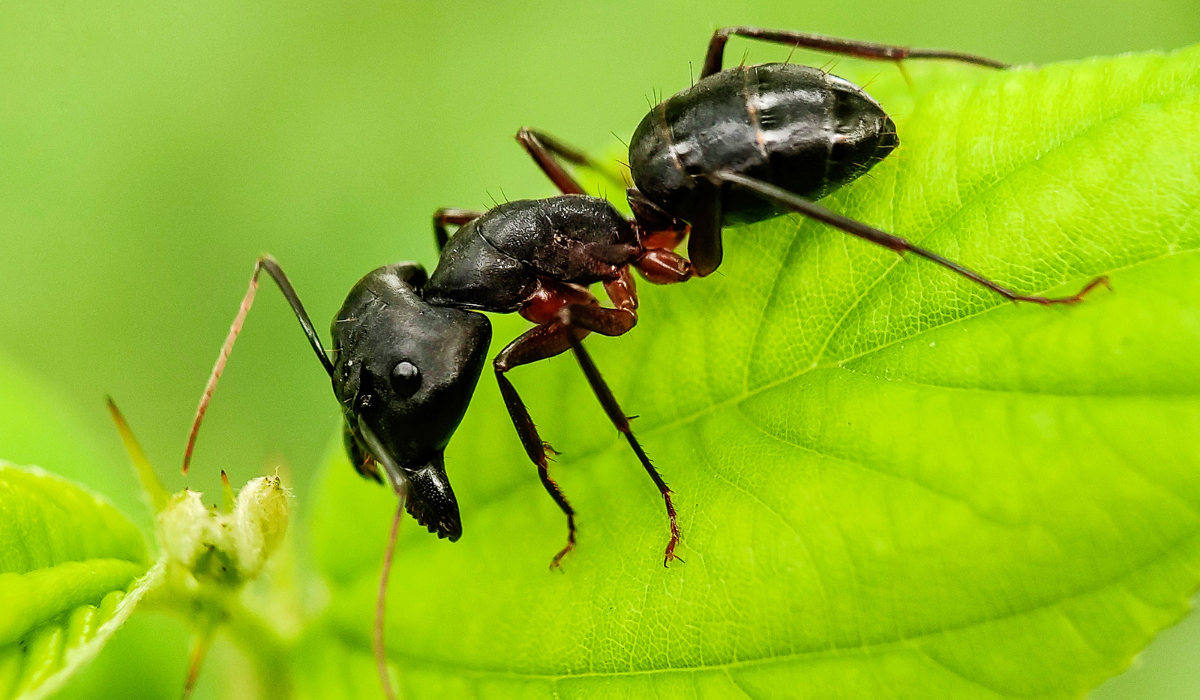
Carpenter Ants can cause structural damage, such as termites, as they burrow through wood to create their nests.
| Aspects | Description |
| Habitat | Primarily target decaying or compromised wood structures |
| Diet | Insects, sweets, and proteins |
| Behavior | Nocturnal and create smooth tunnels |
| Appearance | Dark brown to black, 1/4-inch to 1/2-inch |
| Unique Features | Can eject formic acid when threatened |
Crazy Ants
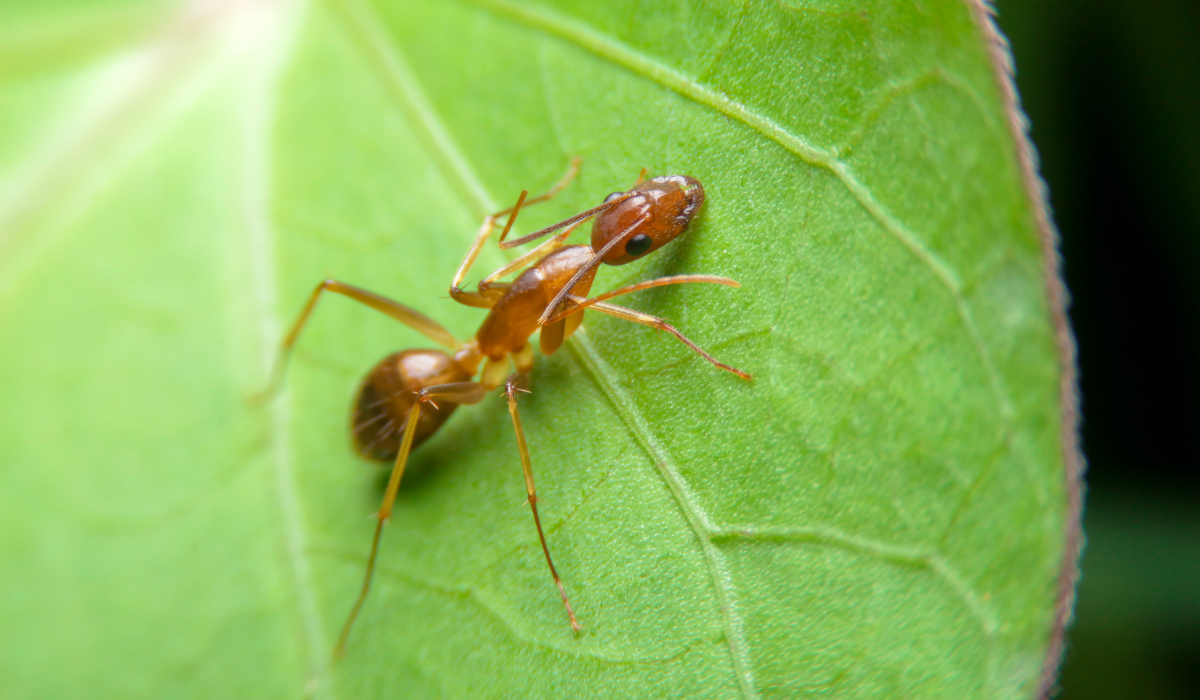
The hairy Crazy Ants get their name from the erratic trails they follow, which are thought to be caused by a disruption in their sensory system. They often infiltrate electronic devices and cause short circuits in states like Mississippi and southern parts of Louisiana.
| Aspects | Description |
| Habitat | Anywhere with food and moisture |
| Diet | Omnivorous, favoring sweets and proteins |
| Behavior | Fast and unpredictable in movement |
| Appearance | Dark brown to black, 1/8-inch |
| Unique Features | Resistant to many conventional ant baits |
Odorous House Ants
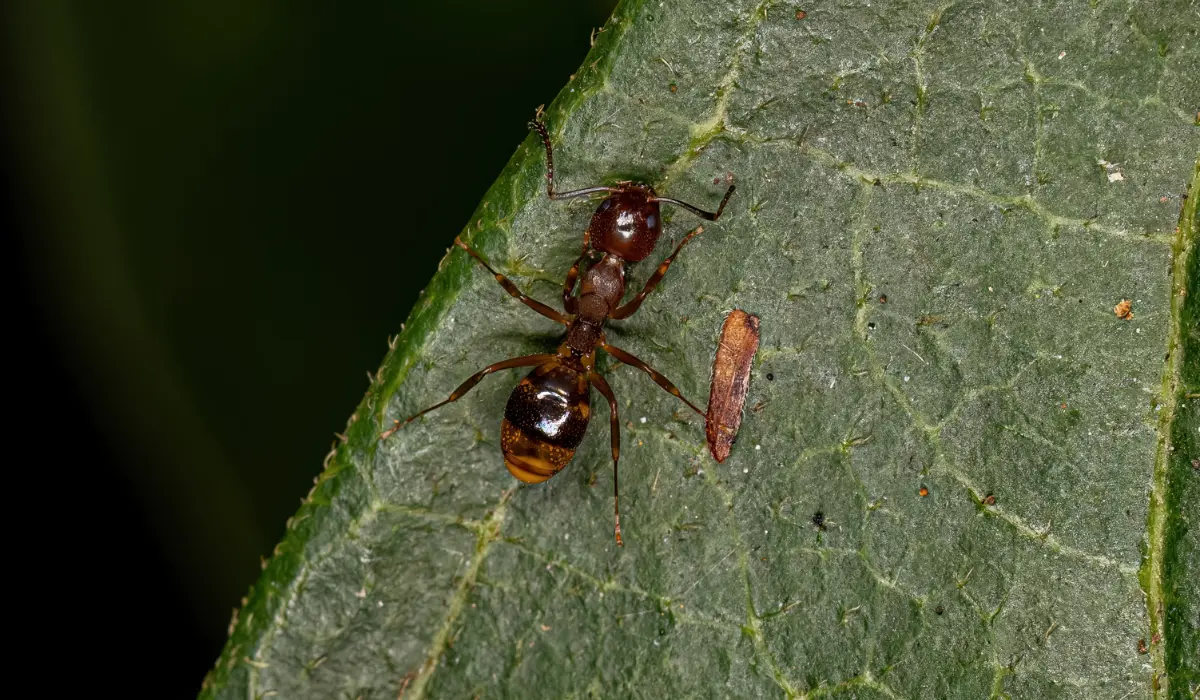
Odorous House Ants emit a rotten coconut smell when crushed, contaminating food sources within homes.
| Aspects | Description |
| Habitat | Moisture-rich areas indoors and under rocks |
| Diet | Sweets, especially honeydew |
| Behavior | Create large colonies, nest almost anywhere |
| Appearance | Brown to black, 1/16-inch to 1/8-inch |
| Unique Features | Emit a distinct odor when disturbed |
Pavement Ants
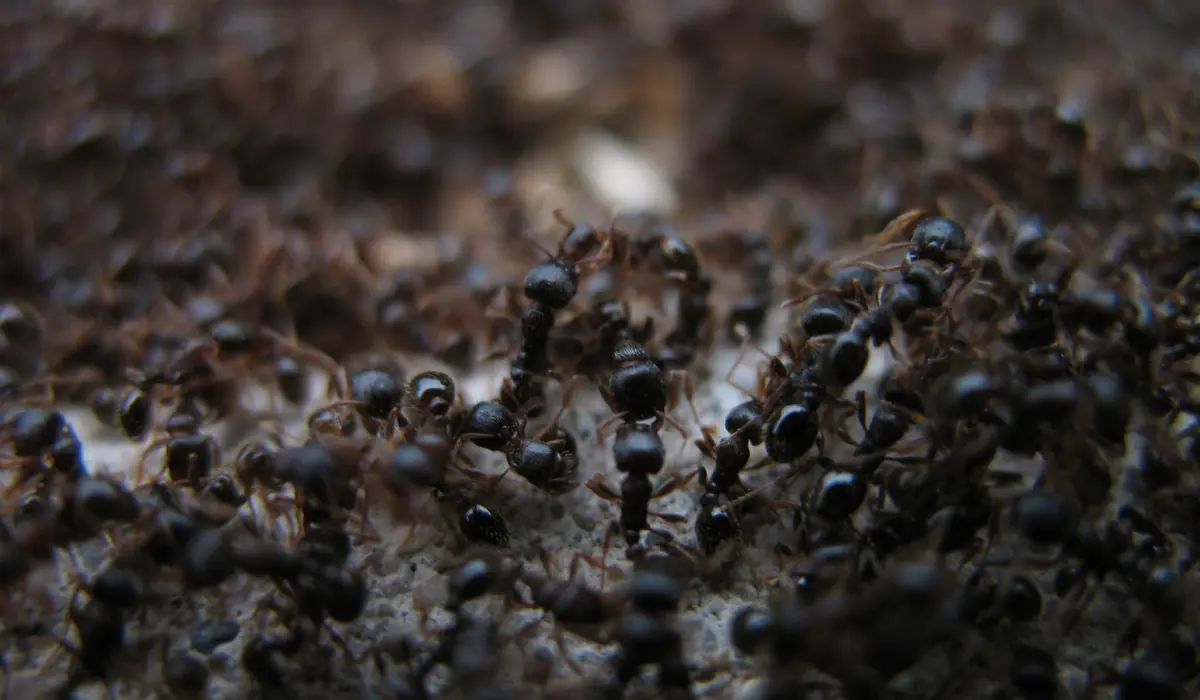
Pavement Ants settle under stones, pavements, and cracks, engaging in noticeable territorial battles.
| Aspects | Description |
| Habitat | Under slabs and stones, in walls |
| Diet | Omnivorous, prefer greasy foods and insects |
| Behavior | Slow-moving, form trails to food sources |
| Appearance | Dark brown to black, 1/10-inch to 1/6-inch |
| Unique Features | Known for visible turf wars between colonies |
Pharaoh Ants
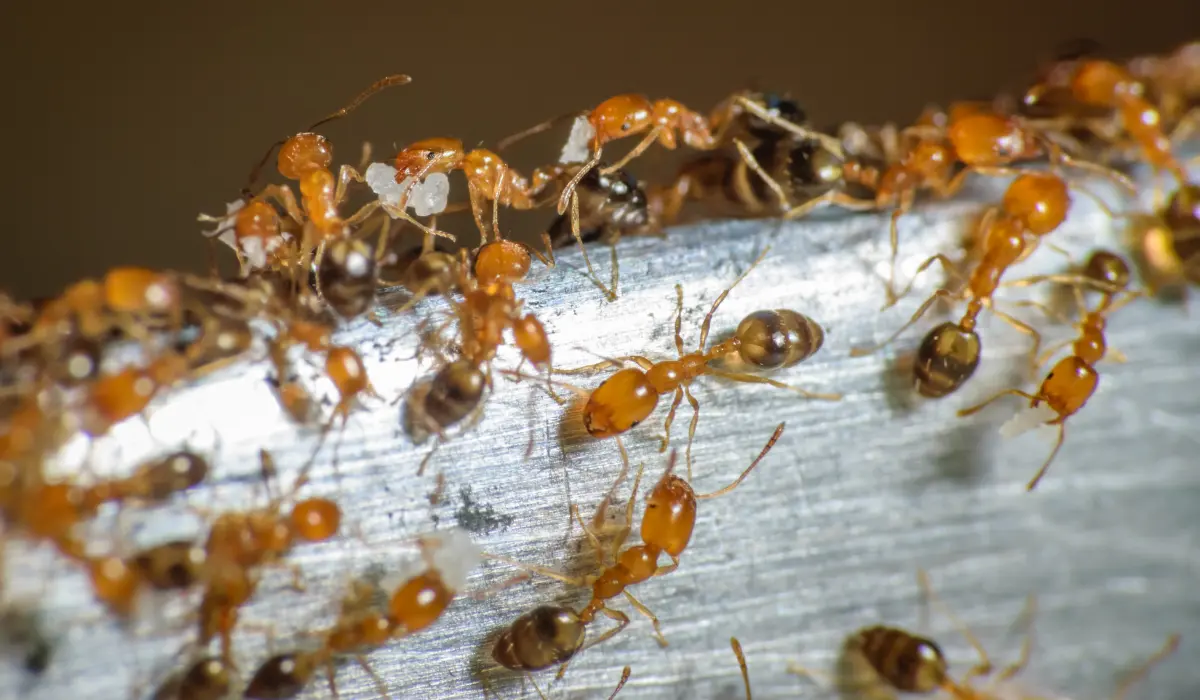
Pharaoh Ants are a major indoor pest in warmer regions of the US, such as Florida and Texas. They’re difficult to control due to their tendency to split colonies when threatened.
| Aspects | Description |
| Habitat | Indoor warm areas, especially kitchens and hospitals |
| Diet | Omnivorous, including fats, proteins, and sweets |
| Behavior | Form multiple colonies, very resilient |
| Appearance | Light yellow to red, 1/16-inch |
| Unique Features | Often require professional extermination |
Argentine Ants
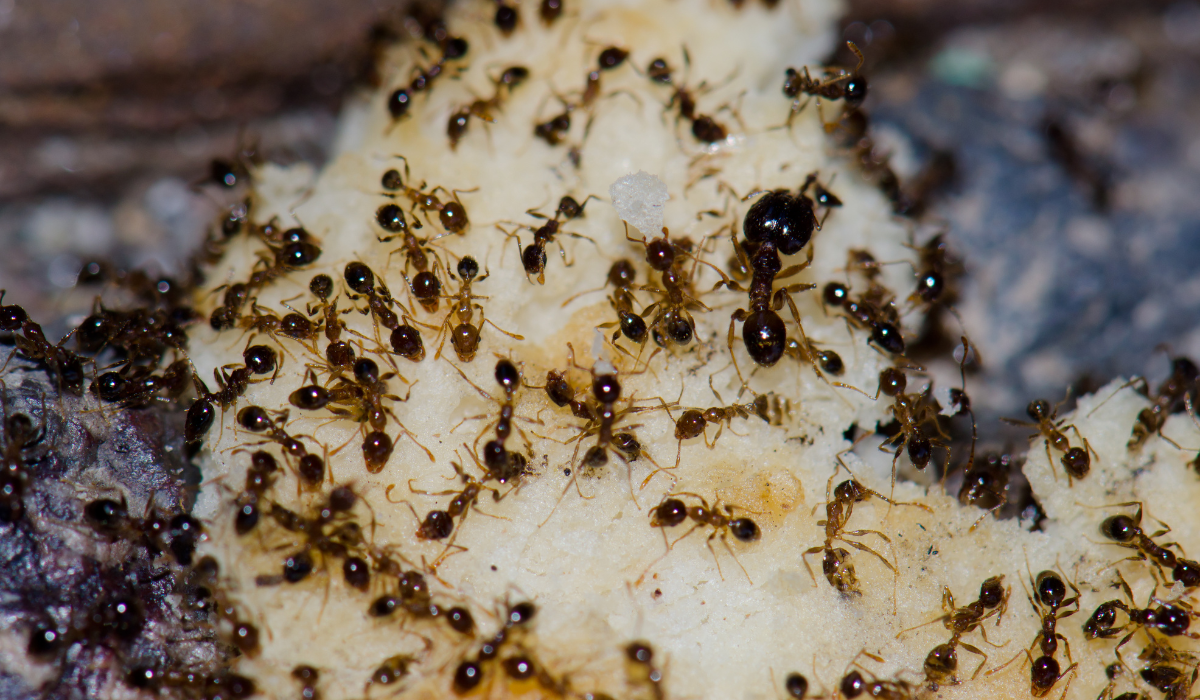
Argentine Ants form massive colonies and outcompete many native species, altering the ecosystem balance, particularly in the Pacific Northwest (i.e., Washington).
| Aspects | Description |
| Habitat | Moist areas, often near food |
| Diet | Sweet foods, fats, and oils |
| Behavior | Non-aggressive to each other, forming supercolonies |
| Appearance | Dark brown, 1/8-inch |
| Unique Features | Able to form large colonies with multiple queens |
Little Black Ants
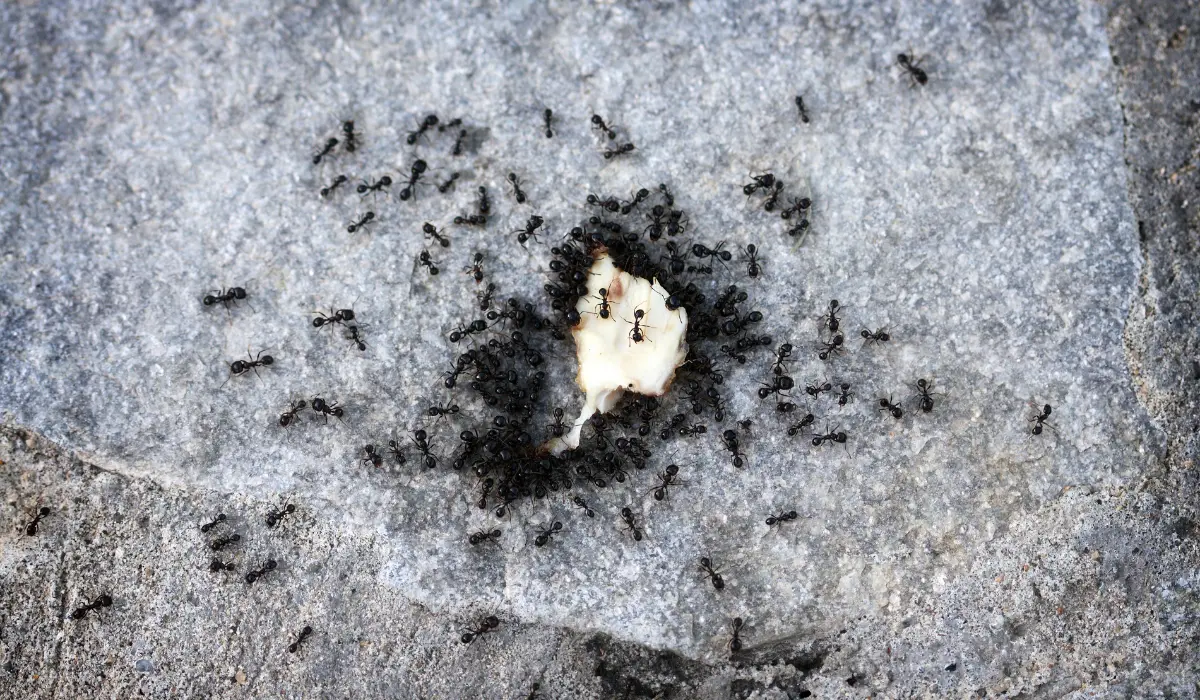
Little Black Ants are frequently found in kitchens, attracted to any crumbs or spills left out.
| Aspects | Description |
| Habitat | In soil, rotting wood, and masonry |
| Diet | Omnivorous, prefer meats, vegetables, and sweets |
| Behavior | Very active, quickly form trails to food |
| Appearance | Shiny black, 1/16-inch |
| Unique Features | Their small size allows them to infiltrate many areas |
Acrobat Ants
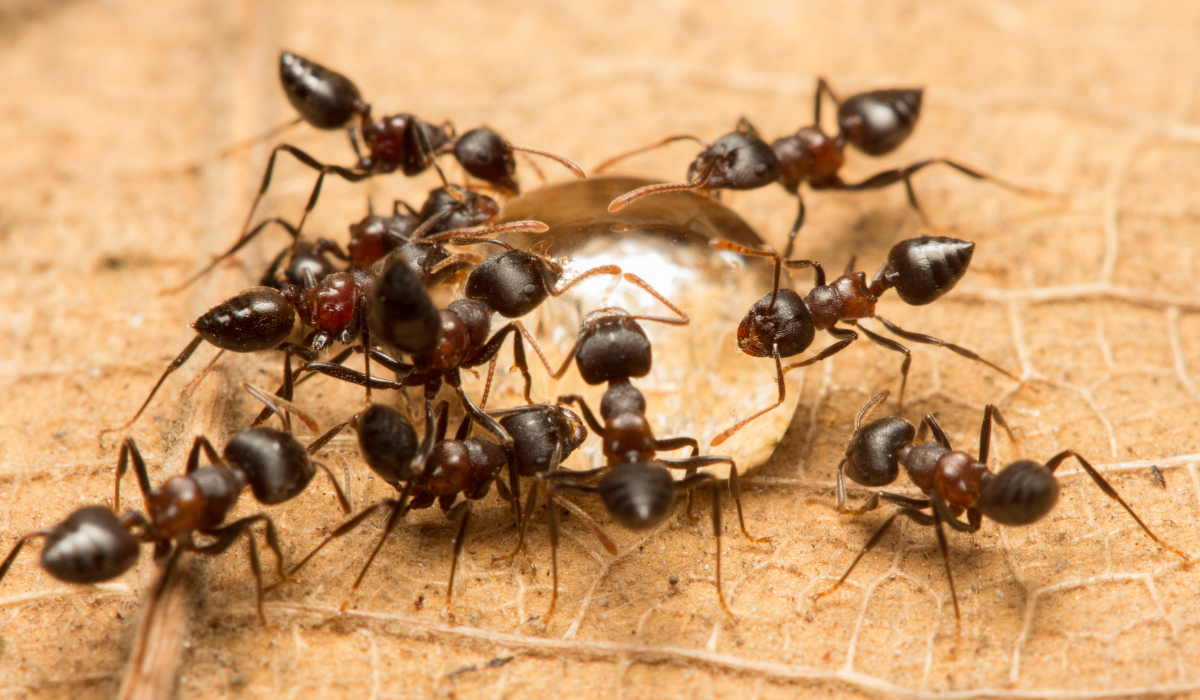
Acrobat Ants are known for their ability to lift their abdomen over their thorax and head when disturbed.
| Aspects | Description |
| Habitat | Decaying wood, foam panels, and inside homes |
| Diet | Insects and sweets |
| Behavior | Nests often located in tree trunks or branches |
| Appearance | Pale brown to black, 1/16-inch to 1/8-inch |
| Unique Features | Distinctive heart-shaped abdomen and clubbed antennae |
Ghost Ants
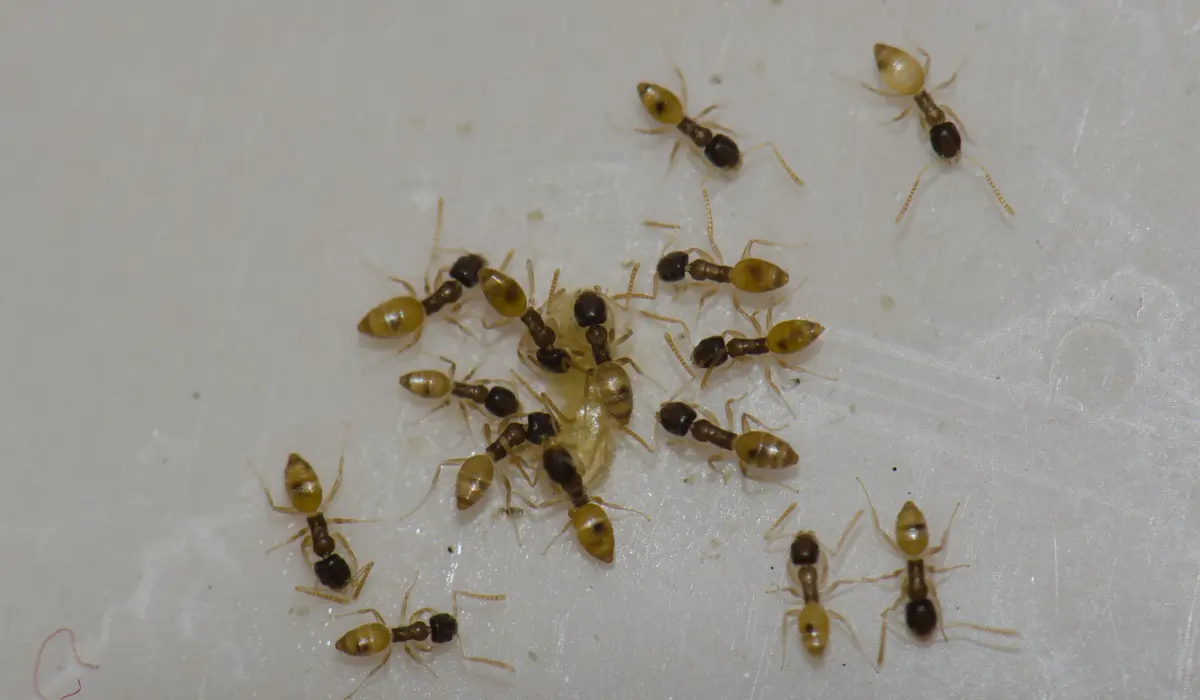
Ghost Ants are elusive and problematic in homes due to their preference for nesting indoors and their tiny size.
| Aspects | Description |
| Habitat | Soil, under rocks, in potted plants |
| Diet | Sweets and insects |
| Behavior | Disperse widely when disturbed, often trailing along edges |
| Appearance | Pale, almost translucent, 1/16-inch |
| Unique Features | Nearly invisible due to their pale color |
HOW TO CONTROL AND PREVENT ANT INFESTATIONS
Controlling and preventing ant infestations involves timely identification, using effective pesticides, and consistently implementing preventative measures to ensure a home remains ant-free.
Identifying an Ant Infestation
According to the LSU AgCenter, quick identification of an ant infestation is crucial for effective control. Check the following areas frequently:
- Kitchen counters and cabinets
- Pantry and areas where food is stored
- Window sills and door frames
- Inside bathrooms and laundry areas
- Around pet food bowls
Using Natural and Chemical Pesticides
As homeowners, you can choose between natural remedies and chemical pesticides for initial ant control. Consider these methods and their application.
| Pesticide Types | Method of Use |
| Diatomaceous earth | Sprinkle around ant pathways. |
| Vinegar solution | Spray on trails and entry points. |
| Ant Baits | Place in areas of activity. |
| Sprays | Use on nests and around the perimeter. |
Employing Preventative Measures
Preventative measures are integral to keeping ants at bay. Adopt the following practices:
- Food Storage: Store food in sealed containers.
- Sanitation: Clean spills and crumbs promptly.
- Trash Management: Use bins with tight-fitting lids.
- Exterior Maintenance: Seal cracks and crevices in walls and foundations.
PROFESSIONAL PEST CONTROL SOLUTIONS
When dealing with ant infestations in Louisiana, DIY pest control often fails. So, seeking professional pest control services becomes essential. These experts offer various targeted control methods to manage pest ant populations effectively.
Here’s what you can expect from them:
| Pest Management Services | Details |
| Initial Inspection | Professionals start by thoroughly examining your property to identify ant species and the extent of the infestation. They check interior and exterior spaces, noting areas of activity and potential entry points. |
| Customized Treatment Plans | Depending on the ant species and infestation level, pest control services provide personalized treatment options. They may use baits, sprays, or non-chemical methods tailored to your situation. |
| Follow-up Visits | To ensure long-term success, pest control companies typically schedule follow-up visits. These are crucial for monitoring the effectiveness of the treatment and making necessary adjustments. |
SHOULD YOU CALL THE EXPERTS?
Attempting to tackle the ant problem alone might worsen the situation when encountering inaccessible or extensive nests.
If you find that ants are causing structural damage or notice an influx of carpenter ants, these are particularly destructive insects that can compromise the integrity of wooden structures.
Whether you’re in Baton Rouge, Plaquemines, or New Orleans, seeking expert help should be easy. For immediate intervention for a severe infestation, let Lajaunie’s ant control specialists tailor a solution that’s right for your home.
For more information about the areas we service, visit our location page.